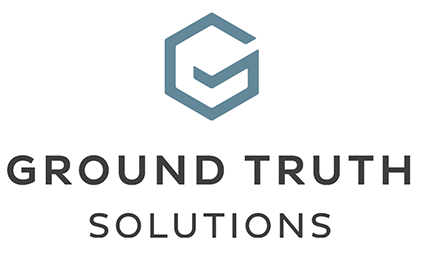Collecting feedback is arguably a first order requirement for a feedback loop. But the Feedback Labs’ community believes that this collection is not enough. Even a well executed survey can quickly become extractive of the community you’re trying to serve, unless you engage in a robust dialogue step to share information back with a community, and engage them in identifying insights.
At a recent LabStorm, Ground Truth Solutions investigated how to ensure that the beneficiaries of their programs also benefit from the feedback itself. Data collection documents a program’s results, but sustained change requires a shift in the way we think about data and feedback. One way to initiate this shift is with good dialogue, creating a two-way street between feedback respondents and collectors. A key step is communicating back to affected people what you heard and how you plan to adjust services in response.
But if recent town halls across the United States teach us anything, dialogue with affected people can be difficult, especially if a program is struggling to see results. Fears around an inability to react to feedback, or a lack of skills to handle delicate situations, keep many organizations from delving into the dialogue stage of closing the loop.
LabStorm attendees brainstormed key components to shifting the mindset around dialogue from being difficult territory to it an absolutely integral part of the feedback process.
- Report “this is what we’ve heard” back to your respondents. Sharing that data with the individuals from whom you you solicited it can be logistically tricky, especially in remote areas or regions affected by conflict. But it’s critical that survey respondents feel invested in and respected by the process, and one component is ensuring that respondents have a chance to see and react to the data collected. This step should precede one in which insights around solutions are also shared- but at the very least, it’s important to ensure that the feedback you’ve collected is verified and legitimized by the community.
- Incentivize learning, not reporting. The community chalkboard is one way to create opportunity for casual conversation about results. We saw a different approach work in a water program in Malawi. Field staff often spent their lunch break chatting with the villagers they were serving. And they were excellent at getting answers to the hard questions. But the moment they were asked to create a citizen report card, they froze up. They dragged their feet setting up formal sessions. But why?
One mechanism that we have seen to effectively disseminate data is a giant chalk board at a central point in the community. This can be an area where summarized data is written down and charts are recreated. In this way, you can also quickly bring other members of the community up to speed, and solicit their experiences and feedback, without needing them to have been a part of the initial survey. Next, you can have informed conversation with accumulated data the community can access. Rather than asking individual respondents why they answered the way they did, you can broaden the conversation and capture a deeper picture of the community on the whole. Use the chalkboard to illustrate the outcomes – X% of the community feels this way – and then ask: why do you think that might be?
Despite great dialogue, the moment reporting on feedback becomes required, it can sometimes halt an otherwise functioning mechanism. Field staff were able to make small tweaks to programming based on continuous informal feedback, but when asked to record and standardize that feedback into for reporting, there was a sense that negative reviews from the community members, which were previously important information for improvement, would now function to penalize the staff. And organization leadership faces perverse incentives to report that unfiltered feedback to funders and other peer institutions.
Our friends at the Center for Employment Opportunities have found an innovative way around this. As they seek to expand their feedback culture to sites around the country, they know that managers will need to be supported in the process before it can be an evaluation requirement. Feedback mechanisms will start simple – reporting on 1-2 things staff have heard. They’re invited to report any changes they are experimenting with in relation to this feedback. In this way, all feedback is valued and there is space to celebrate the managers for beginning to build these loops. By starting to create a routine of learning from constituents, it will be easier to build that feedback into a reporting process later.
We are excited to learn more from Ground Truth Solutions as they iterate on how to keep their dialogue stage robust. Want to stay involved? Reach out to us at [email protected] if you’d like to learn more from Nick and his team at GroundTruth Solutions, contribute your thoughts below and check back here, on the Feedback Labs Blog, for updates on how we help drive this momentum forward.
Nick van Praag set up Ground Truth Solutions in 2012. His previous career spans humanitarian and development work at the Office of the UN High Commissioner for Refugees, the Aga Khan Development Network, and the World Bank. His interest in affected populations’ feedback and humanitarian performance stems from his work at the intersection of communication and public policy at the World Bank and his experience of humanitarian aid delivery at UNHCR.
LabStorms are collaborative brainstorm sessions designed to help an organization wrestle with a challenge related to feedback loops, with the goal of providing actionable suggestions. LabStorms are facilitated by FBL members and friends who have a prototype, project idea, or ongoing experiment on which they would like feedback. Here, we provide report-outs from LabStorms. If you would like to participate in an upcoming LabStorm (either in person or by videoconference), please drop Sarah a note at [email protected].









